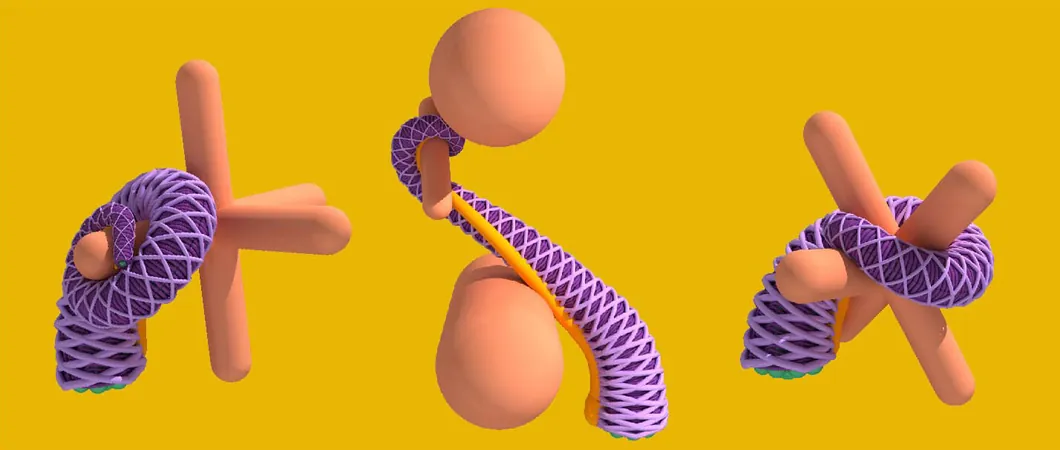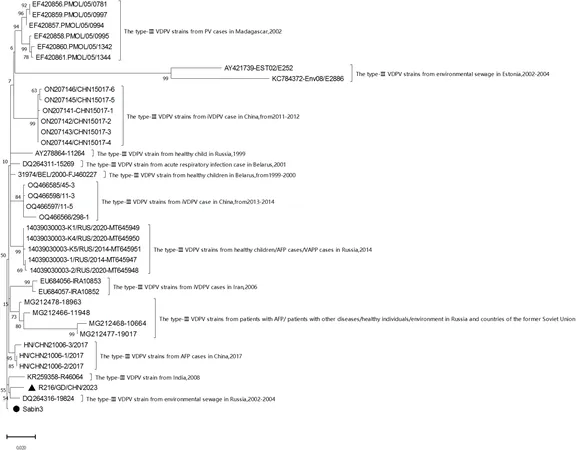
Revolutionary Computational Model Unveils the Secrets of Octopus Arm Movement
2024-11-11
Author: Rajesh
Groundbreaking Study
A groundbreaking study has recently emerged, capturing the attention of both the scientific world and robotics enthusiasts alike. Researchers from the University of Illinois Urbana-Champaign, alongside collaborators from other esteemed institutions, have published their findings in the Proceedings of the National Academy of Sciences, unveiling a revolutionary computational model that meticulously details the sophisticated muscular architecture of an octopus arm.
Complex Physiology and Robotic Inspiration
This unprecedented model not only showcases the complexities of octopus physiology but also serves to simplify how these limbs can be controlled, demonstrating that intricate three-dimensional movements can arise from straightforward muscle contractions. The ultimate ambition of this endeavor is to develop “cyberoctopus” capabilities—essentially a robotic system emulating the dexterous and fluid movements synonymous with octopus arms.
Distributed Neural Structure
In stark contrast to many species, including humans, where decision-making is centralized in the brain, octopuses feature a unique distributed neural structure. Each of the eight arms operates with a certain degree of independence, allowing for an exceptional range of motion and adaptability, described as nearly infinite degrees of freedom. This complexity presents vast challenges for computational modeling.
Motivations Behind the Research
According to Associate Professor Mattia Gazzola, “Our primary motivation is to decipher how to manage a complex system with numerous degrees of freedom and to discover alternatives to costly computation methods.” This inquiry into the octopus, an animal that has fascinated researchers since the 1980s, seeks to reveal the 'secret' behind its remarkable capabilities.
Insights From Living Organisms
Mechanical engineering Ph.D. candidate Arman Tekinalp echoes this sentiment, highlighting the potential to glean insights from living organisms to inspire innovative designs in soft robotics. The team’s earlier efforts laid the foundation for this research; they cleverly combined MRI, biomechanical data, and historical methods to create a realistic simulation of an octopus arm composed of nearly 200 intertwined muscle groups.
Direct Observation and Data Collection
Their studies involved direct observation of a live octopus in a controlled environment. The creature was prompted to reach for a tempting object, generating valuable motion data through video capture. Gazzola likened the experience to engaging with a child, illustrating the challenges of maintaining the octopus's interest during experimentation.
Modeling Arm Movements
The researchers utilized advanced concepts from topology and differential geometry to model the arm's complex movements. By developing simplistic muscle activation patterns, they were able to replicate the intricate motions of the octopus arm, effectively linking two topological quantities—writhe and twist—to muscle dynamics and movement.
Significance of the Model
This high-fidelity computational model stands as a significant milestone in both biological understanding and engineering ingenuity. "It offers a practical platform for roboticists to evaluate their algorithms," stated Professor Prashant Mehta, who lauded the concerted efforts of the diverse research team.
Future Aspirations
As the project evolves, the researchers are eager to enhance their simulations to coordinate the movements of all eight arms, similar to how octopuses manipulate several objects simultaneously. Their ambitious plans include the ultimate goal of engineering robotic prototypes capable of experimental testing based on these sophisticated findings.
Continued Journey
As Gazzola suggests, the journey is far from over. The team aims to automate their model, allowing it to learn and adapt to perform tasks independently. This innovative research, representing a fusion of biology and engineering, not only promises advancements in soft robotics but also enriches our understanding of one of nature's most enigmatic creatures.



 Brasil (PT)
Brasil (PT)
 Canada (EN)
Canada (EN)
 Chile (ES)
Chile (ES)
 Česko (CS)
Česko (CS)
 대한민국 (KO)
대한민국 (KO)
 España (ES)
España (ES)
 France (FR)
France (FR)
 Hong Kong (EN)
Hong Kong (EN)
 Italia (IT)
Italia (IT)
 日本 (JA)
日本 (JA)
 Magyarország (HU)
Magyarország (HU)
 Norge (NO)
Norge (NO)
 Polska (PL)
Polska (PL)
 Schweiz (DE)
Schweiz (DE)
 Singapore (EN)
Singapore (EN)
 Sverige (SV)
Sverige (SV)
 Suomi (FI)
Suomi (FI)
 Türkiye (TR)
Türkiye (TR)
 الإمارات العربية المتحدة (AR)
الإمارات العربية المتحدة (AR)